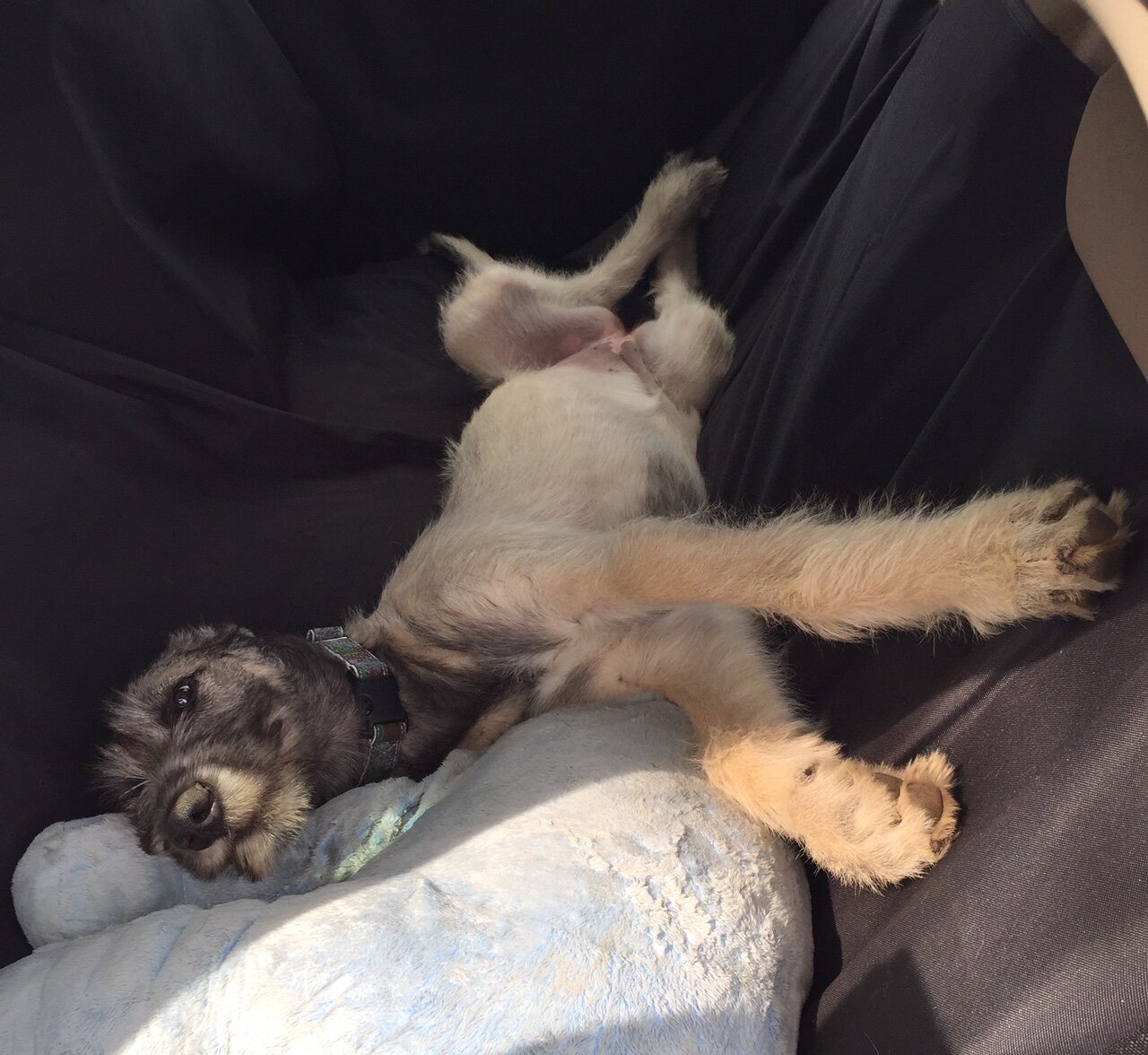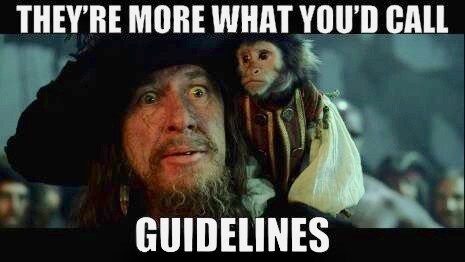Why a muzzle?
Muzzles often get a bad rap because they make a dog look “scary.” However they are an important tool for keeping dogs - and people - safe. There are multiple reasons that a dog may wear a muzzle, for example:
Cai wore a muzzle when he went to the emergency room for a painful eye injury.
The dog is fearful of strangers or dogs approaching. The muzzle not only keeps this dog from being able to bite someone, it also acts as a signal for others to give him space.
The dog may be friendly and social most of the time, but bite in specific contexts, such as when guarding food or his owner.
The dog may be too rough with biting during play, but otherwise play nicely. (One of my own dogs fits this category.)
The dog may bite when in pain. (One of my dogs needs to be muzzled at the vet’s if he is injured because he would bite the vet.)
The dog may be in the habit of picking up trash or other unsafe items and trying to eat them.
The dog may have severe allergies or another medical condition that could be triggered by eating things off the ground, or eating another dog’s treats.
The dog may be required to wear a muzzle while traveling or due to breed-specific legislation.
Whatever the reason, muzzles can be a lifesaving tool.
What kind of muzzle should I use?
If your dog will be wearing the muzzle for more than a few minutes, you should use a “basket” muzzle. This is the type that creates a “cage” around the dog’s jaws. It mostly prevents the dog from biting anyone*, but still allows him to eat treats, drink water, and pant to cool himself down.
Do not use a “soft” or “grooming” muzzle that forces the dog’s mouth shut - this is dangerous because it does not allow the dog to pant to cool down. It may also still allow the dog to nip with his front teeth!
* Note that determined dogs may still manage to nip, bite, or grab objects through softer basket muzzles. Here is an article that compares muzzle types, and will help you choose an appropriate muzzle for your dog’s temperament and specific needs.
Here is a video from dog aggression expert Michael Shikashio on choosing an appropriate type and size of muzzle for your individual dog:
Where can I buy a muzzle?
Terra wears a muzzle because she can be too rough during play.
There are a few brands that you can find in big box stores, however these may not fit your particular dog well, especially if your dog has a particularly flat, long, or wide snout (for example, French Bulldog, Greyhound, or pit bull-type). Always measure your dog’s snout rather than going by the “suggested size” for a particular breed. For example, the Baskerville Ultra is easy to find but has limited sizing options.
If your dog is full grown, I recommend purchasing a muzzle that is more accurately sized for your specific dog. That will require getting measurements of your dog’s snout, head, and neck. If you are ordering online, check the vendor’s recommendations for where and how to measure for their own products.
Wire muzzles - good for high bite risk dogs, with the one caveat that getting “punched” by a wire muzzle still hurts:
Dean and Tyler has a large variety of size options.
Big Snoof Dog Gear makes custom wire muzzles.
Vinyl muzzles - good for biters and scavengers:
Jafco has a limited number of sizes but are lower in price.
Trust Your Dog makes custom vinyl muzzles.
Mia’s Muzzles makes custom vinyl muzzles.
Solid, non-flexible, injection-molded polyethylene (plastic) - good for biters and have an optional “scavenger guard”:
The Muzzle Movement (based in UK; has lifetime warranty)
Custom biothane muzzles - for lower bite risk dogs; coverage can be fuller for scavengers or more open for increased airflow:
Khaos Kollars (they also make custom leather muzzles)
Bumas (I have a Bumas for two of my adult dogs and I like them a lot!)
Teaching your dog to wear a muzzle
Now that you have your appropriately-sized muzzle, you need to teach your dog to be comfortable wearing it. Unfortunately most dogs will scratch and fuss if you just put something on their face and head out. Teaching them to be okay with it is not difficult, as long as you break the process down into little steps and make it fun along the way - that’s desensitization!
Here is a how-to video by Emily Larlham:
Here is another video by Chirag Patel:
Here is one from Sarah McManaman that focuses just on the process of buckling the muzzle behind the dog’s head:











